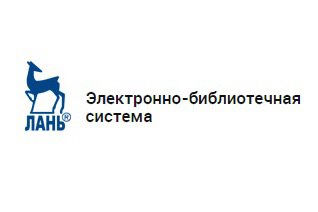| УДК 622.755:622.362.3 | DOI: 10.21440/0536-1028-2019-8-21-29 | Download |  |
Bagazeev V. K., Boikov I. S., Valiev N. G., Zdorovets I. L. Sand separation during hydrotransportation. Izvestiya vysshikh uchebnykh zavedenii. Gornyi zhurnal = News of the Higher Institutions. Mining Journal. 2019; 8: 21–29 (In Russ.). DOI: 10.21440/0536-1028-2019-8-21-29
Abstract
Introduction. For solid sand particles continuous separation by size and density in the proccessing chain of placer development with suction dredges, it is advisable to use cylindrical hydrocyclones when dredging a deposit.
Research aim is to determine process parameters of small and light particles and heavy minerals secondary separation in cylindrical hydrocyclones when developing placers with dredgers.
Methodology. The paper deals with the problems of throughput and structural dimensions determination and solid particles separation in fat bottom cylindrical hydrocyclones calculation based on the theoretical positions of cylindrical-conical hydrocyclones and laboratory experiments.
Results. The most acceptable analytical dependencies and formulae were selected for the approximate determination of the parameters: throughput (productivity) according to the formula of Modera and Dalstrom; pressure drops with Reynolds and Euler numbers; boundary grain size according to the detailed formula of A. I. Povarov. A laboratory installation of a fat bottom cylindrical hydrocyclone was mounted with characteristics similar to cylindrical hydrocyclones. A sufcient convergence of the calculated parameters with the indicators measured at the laboratory installation of a fat-bottom hydrocyclone is shown with a separation efciency of 54%.
Conclusions. The use of the secondary separation of minerals in cylindrical hydrocyclones will signifcantly increase the efciency of their further dressing.
Key words: dredger; cylindrical hydrocyclone; performance; pressure drop; boundary grain.
REFERENCES
- Basharov M. M., Sergeeva O. A. Structure and design of hydrocyclones. Kazan: Vestfalika Publiching; 2012. (In Russ.)
- New reference for a chemist and a production engineer. Processes and devices of chemical technologies. Part 2. St. Petersburg: Mir i semia Publishing; 2006. (In Russ.)
- Karmazin V. V., Toropov O. A. Theoretical analysis of hydrocyclones process capabilities. Gornyi informatsionno-analiticheskii biulleten (nauchno-tekhnicheskii zhurnal) = Mining Informational and Analytical Bulletin (scientifc and technical journal). 2009; S15 Special edition: 215–228. (In Russ.)
- Pilov P. I. Mineral gravity separation. Dnepropetrovsk: NSU Publishing; 2010. (In Russ.)
- Izmailova A. N., Konsetov V. V. Theoretical determination of hydrocyclones fow characteristics. In: Hydrodynamic and heat-mass-exchange processes in chemical equipment. Lenniikhimmash. Proceedings. 1967; 2: 5–40. (In Russ.)
- Povarov A. I. Hydrocyclones at dressing mills. Moscow: Nedra Publishing; 1978. (In Russ.) Balakhnin I. A. Studying the size of the air column in a cylindrical hydrocyclone. Scientifc Review.
- Engineering. 2014; 1: 66. (In Russ.)
- Golubtsov V. M., Oleinik M. L., Kravchenko D. Iu. On the productivity callculation of a alumina industry hydrocyclone at Zaporizhia aluminium smelter. Metalurgiia: naukovi pratsi ZDIA. 2009: 20: 147–153. (In Russ.)
- Moder J. A., Dahlstrom D. A. Fine-size, close-specifc-gravity solid separation with the liquid-solid cyclone. Chem. Engng. Progr. 1952; 48 (2): 75–88.
- Golubtsov V. M. To the calculation of hydraulic resistance of pressure hydrocyclones. Metalurgiia: naukovi pratsi ZDIA. 2010; 22: 191–197. (In Russ.)
- Gusev A. A. Hydraulic engineering. Moscow: Iurait Publishing; 2013. (In Russ.)
- Ialtanets I. M. Hydraulic mining reference. Moscow: Gornaia kniga Publishing; 2011. (In Russ.)
Received 28 October 2019









